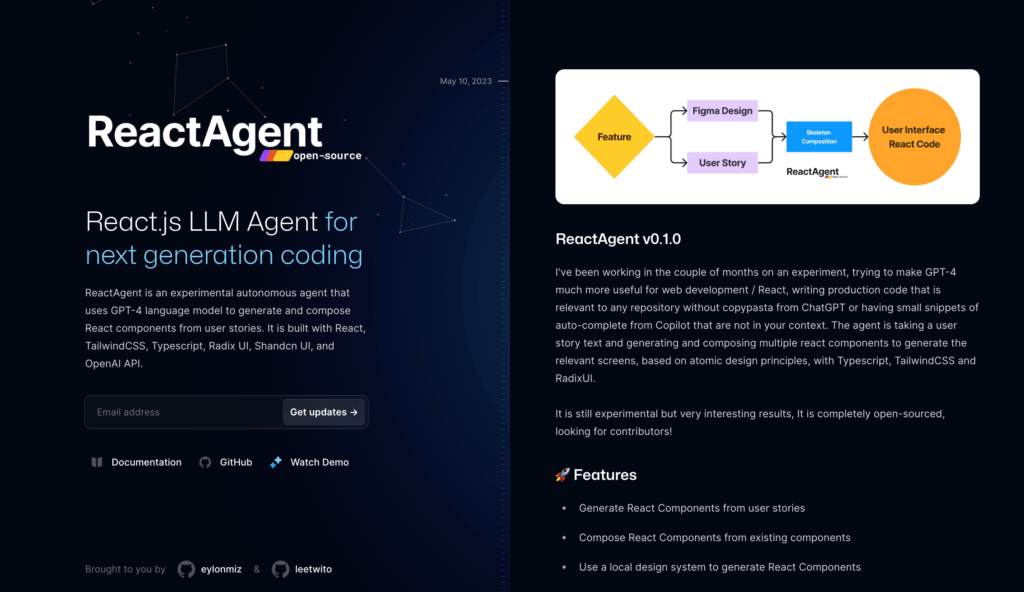react agent
Basic Information
ReactAgent is an experimental open-source autonomous LLM agent that generates and composes React components from user stories using the OpenAI GPT‚Äë4 model. It is built with React, TypeScript, TailwindCSS, Radix UI and Shadcn UI and provides both a backend generation pipeline and a frontend sandbox to render outputs. The repository includes scripts and examples to run a backend generator that converts user stories into JSON and component code, and a frontend app to preview generated components. It also provides documentation, architecture notes and configuration examples for local component folders and environment variables. The project is intended for developers who want an automated way to prototype UI by turning product requirements or user stories into scaffolded React components.








